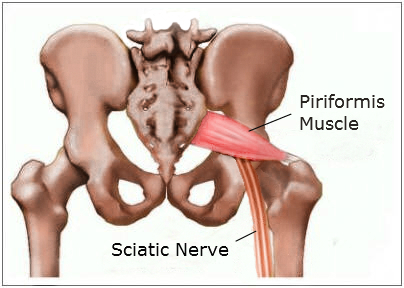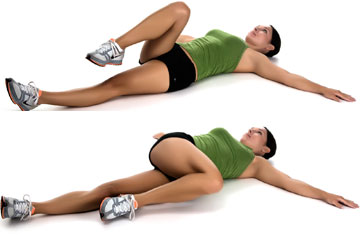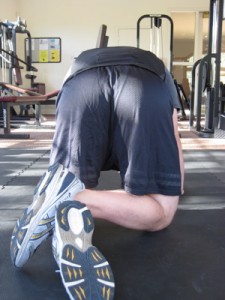Pseudo-Sciatica is a real thing and it’s costing people a lot of time and headache chasing something that isn’t there. For years I was convinced I was dealing with some kind of sciatica from the symptoms I was experiencing. I would get this weird numbing sensation from my butt down into my leg which would always confuse me since I was never diagnosed with a herniated disc. I get to talk with a lot of people going through this same situation and wanted to share with you a simple test you that will give you confidence in your next best step to getting relief.
Why am I getting numbness and tingling down the back of my legs and into my feet?
Just to be safe, make sure you see a professional to rule out any major issue going on in your lower back. If you haven’t, do it! Then come back and let’s get yourself feeling better!
Let’s set the record straight.
Pseudo-Sciatica, also known as Piriformis Syndrome is something that I believe a lot of people go undiagnosed with. Unfortunately, a lot of specialists don’t ever address this as a potential cause for your pain. You really can’t cure it with surgery while pain meds only mask the symptoms instead of getting to the root cause. With Piriformis Syndrome, most people experience numbness/tingling down the leg and can experience loss of range of motion in the affected area. If you were to solely rely on your doctor, this is how it would shake down. You go to your doctor complaining of numbness and chronic pain and they either chalk it up as a bulging disc or some kind of nerve issue. They may give you a few stretches for nerve pain or a prescription to some nerve blocker and send you on your way.
This is crap!
What I want you to be confident in, is knowing the difference between real Sciatica and Pseudo-Sciatica. This will give you a clearer path to getting control of your own back pain.
Remember, you need to have a good understanding of your pain. Go see your doctor first before attempting anything. Make sure there is no underlying issue that you need to be aware of before starting.
How to diagnose Pseudo-Sciatica (Piriformis Syndrome)
To really rule out Piriformis Syndrome, you need a good understanding of exactly what kind of pain you are experiencing. 2 are prior Key requirements to maximize your ability to diagnose this would be A) Previous pain history, such as a previous disc issue or nerve complications along with a bit of time to work on some simple moves to see if the issue resolves itself. Not being a doctor doesn’t mean you can’t perform a few simple tests on yourself. If your nerve blockers aren’t touching the pain and nothing else seems to work, follow this protocol.
For starters, learn as much as you can about Piriformis Syndrome. You need to know what the Piriformis muscle does and why this syndrome is so common. This information is vital to get the best diagnosis you can. For example, it’s easy to confuse numbness down the legs as Sciatica vs Pseudo-Sciatica. The problem is, disc herniations and piriformis syndrome have a lot of the same symptoms. That’s why the previous knowledge of your body is very important.
For the sake of this article lets say you rule out the bulging disc. We already know a common symptom of Pseudo-Sciatica is chronic tingling or numbness down either leg. Now, let’s do a simple test to help further along your own diagnosis.
Simple at Home Pseudo-Sciatica Test
While sitting on the edge of a table or counter top with your legs hanging off, straighten the leg that is having the discomfort. Keep your toes pointing up. If your leg is stretched out and parallel to the floor and your symptoms INCREASE in intensity, there is a good chance you are dealing with some kind of disc/nerve issue.
If straightening the leg does not increase symptoms, there is a good chance your pain could be caused by an over-active piriformis muscle.
The second portion of this test will be testing for a tight Piriformis.
While in the seated position, take the affected knee up towards the same shoulder and then slowly move the knee across your lap and over towards the opposite shoulder. If the pain increases as you make this transition, you should spend some time working on releasing your Piriformis.
What causes Pseudo-Sciatica (Piriformis Syndrome)?
In some cases, you lose mobility in the hip area, this is normally due to the Piriformis being so irritated and locking down so tight around the sciatic nerve that there really isn’t any breathing room for that nerve to move around. Which is why you experience the severe pain when sitting, standing, walking or from super sore legs. If your hip (side of the butt cheek) is tender to the touch and the majority of your pain when stretching occurs in that area there is a good chance you’re dealing with Pseudo-Sciatica.
You can also blame the majority of this issue on lifestyle habits. Below is a list of common activities or habits that play a big role in causing Pseudo-Sciatica. Remember, the Piriformis muscle is a hip rotator. It works along with a few other muscles in the hip, so when there are imbalances or activities done that hammer the muscle over time, you’re bound to have some kick back from over-use.
1) Distance Running with excessive external hip rotation
2) Sitting for long periods of time
3) Driving long distances with your hips externally rotated.
4) Running or walking on uneven surfaces, up stairs or inclines.
5) Over pronating your feet
7) Imbalances between the inner thigh, outer thighs, and hamstrings.
All of these done in excess and without proper exercise programming to counter-balance the under-developed muscles, causes the Piriformis to be over-worked and to impinge on the sciatic nerve.
A simple approach to treating Pseudo-Sciatica (Piriformis Syndrome)
When it comes to dealing with a pissed off Piriformis muscle, you want to ease into trying to release it. If you come in too hot, it’s not going to end well. I highly recommend doing an 8-10 minute fast paced walk to get the muscles in the hip loosened up. If walking causes an increase in irritation, skip the walk and work on light foam rolling or a modified level of walking.
The stretches you will start with are super simple but extremely effective. Keep in mind the health of your lower back. Some of the stretches involve twisting, so if your having some kind of inflammation issue in your spine or twisting the lower back causes more irritation, move past this first variation.
Do the following stretches and hold each leg for 2 sets of 2-3 minutes.
Breathe deep into each stretch!
Hip Drop Stretch:
Start by laying flat on your back and rotating your leg over your hip until you feel a pull in your butt. Try to keep your back flat on the floor and your eyes on the ceiling.
The Funky Pigeon
This one can be tricky but all your doing is shifting your weight to one side after the leg is in position. Follow the image above and see how your leg feels once in this position. If you’re feeling a good stretch then hang out here for 2 minutes. If not, then try bringing the shin that is bent into more of a 90-degree angle. You can also try shifting your weight towards (in this picture) the left hip or whichever leg is tucked under.
Figure 4 Stretch
This is another variation from the one above. Take your first leg and turn it IN towards the opposite leg with the ankle resting on the back of the opposite legs ankle. From here, all your doing is shifting your weight towards the leg that is bent. In this case, you will shift your weight to the back, right. You will have to play with this stretch until you really feel a good pull on the Piriformis.
Full Pigeon Stretch
Super simple and can be done either on the floor or up on your desk at work!
How to apply what you learned.
Stop thinking so much. Don’t over complicate it. Just take action and execute. Seriously, you could be weeks away from getting the relief you have been chasing for years.
The key to beating something like Piriformis Syndrome is to spend time every day working on it. Pick 2 of these exercises below and do them 3 x a day for 2 minutes each leg. That’s 24 minutes total for an entire day. A 24-minute sacrifice that will bring massive relief to not only your aching back but that stubborn Pseudo-Sciatica you have been popping pills for, for weeks. Where most people mess up is they go about it at half throttle. Doing these stretched once maybe twice a week WON’T WORK. You will probably barely even notice a difference simply because the time you spend jacked up is still greater than the amount of time you spend trying to un-jack yourself. Make sense?
Pick one!
Hip Drop Stretch 3 x 2 minute holds
Funky Pidgeon 3 x 2 minute holds
or
Figure 4 Stretch 3 x 2 minute holds
Full Pidgeon 3 x 2 minute holds
Thanks for reading!
What have you used to get relief from Sciatica or Pseudo-Sciatica? Let me know in the comments below!
If this helped you in any way, be sure to share the wealth with someone who needs it!
William







Best write up on this condition in the universe! OTR Truck Owner/Operator lived with the chronic pain for 4.5 years, best pain relief in 4.5 years with the first ‘full pigeon’ stretch. For the first time have hope of full recovery, after just 1 day’s routine. Thaaaank You!!!
Thanks for the comment and I am pumped you found value in it!
What do you do when the Piriformus Syndrom is debilitating.
My partner has it and he can hardly move without experiencing excruciating pain.
It has been like this for 4 days.
Is heat or cold better? Can’t seem to get any relief. Corticosteroid injection?
Any suggestions much appreciated.
Hey Dorothy,
Excruciating pain should probably get checked out by a doctor to rule anything out. Do you know what may have brought on the issue? What do they do for work? Common daily activities?
I will try, I will let you know.
I hae suffered from what I thought was sciatica for years. These tests randomly indicated Piriformis. Yoga and PT made symptoms worse. After an MRI, a 2 mm synovial cyst was discovered. Have an MRI if in doubt!
Hey very interesting blog!
Thanks for reading Adolph!